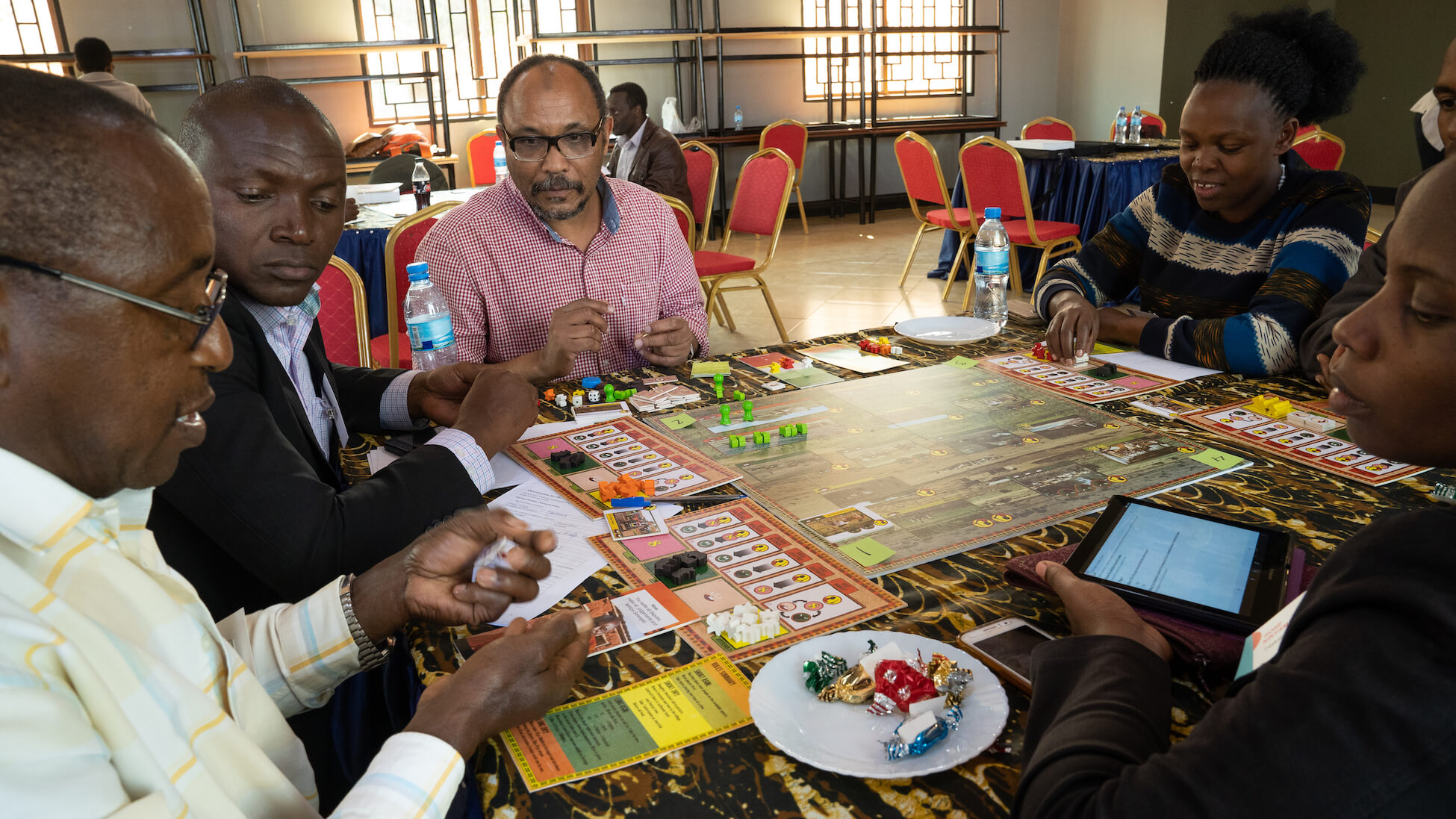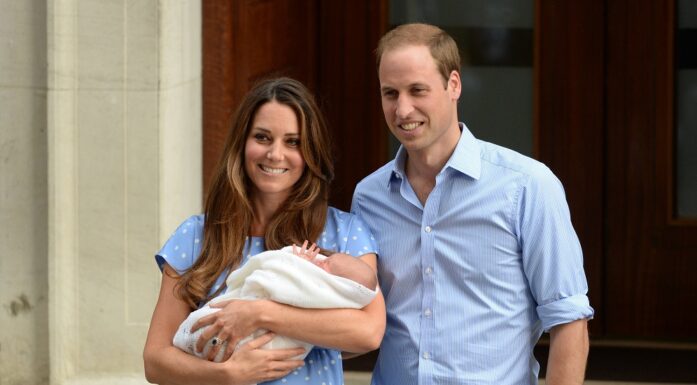Gaming their way to sustainable development
Researchers wanted to involve local people living around Kenya and Tanzania’s Serengeti-Mara parks in developing a sustainable future for them and the parks. They developed a board game to get people talking to the researchers — and to each other. That game has now won an international award.
Serengeti National Park is home to a breath-taking array of wild animals, from lions to elephants and migrating wildebeests. But an equally important part of this ecosystem is the local people living on the fringes of the area.

Humans play an important role in the Greater Serengeti-Mara Ecosystem, which include Serengeti National Park in Tanzania and the Mara National Reserve in Kenya. Photo: Per Harald Olsen/NTNU
They will be the ones most affected by government management decisions. At the same time, their day-to-day actions and livelihood choices determine whether the park’s ecosystems are protected.
So when researchers with a multinational EU-funded project called AfricanBioServices wanted to know what people in the area around the park wanted for their future, and what they thought about development and the park, they took an unusual approach to having this conversation.
Savanna Life
The game allows for four players, with each player representing one family.
The game reflects real life in that there is a limited amount of land for grazing cows or agriculture.
The players use the land for collecting food for their livestock and families and obtaining happiness through investing in education and healthcare. The game is played in five rounds, with each round representing a year in the life of the village.
Each year the number of family members in each household increases, again reflecting real life. The number of new household members is partly up to the player.
Livestock numbers can also increase, which causes land to be increasingly scarce. This in turn requires players to find common solutions, in particular when disasters are introduced by the event cards.
At the end of year five, the players win if all the families in the village are above a certain level of happiness.
For more info see: savannalife.no
They developed a board game that let local people see how different land management approaches — and their own choices — might affect their own lives in the future. That game, “Savanna Life”, has now won an international prize at the 10th Ecosystem Services in Practice World Conference, held in Hannover, Germany earlier this autumn.
- You might also like: Serengeti Park disappearing
People part of the ecosystem
Bente Jessen Graae is a plant ecologist and professor at NTNU’s Department of Biology who has been a part of the AfricanBioServices project. The project focused on Serengeti National Park and the Mara National Reserve and surrounding areas in Tanzania and Kenya.
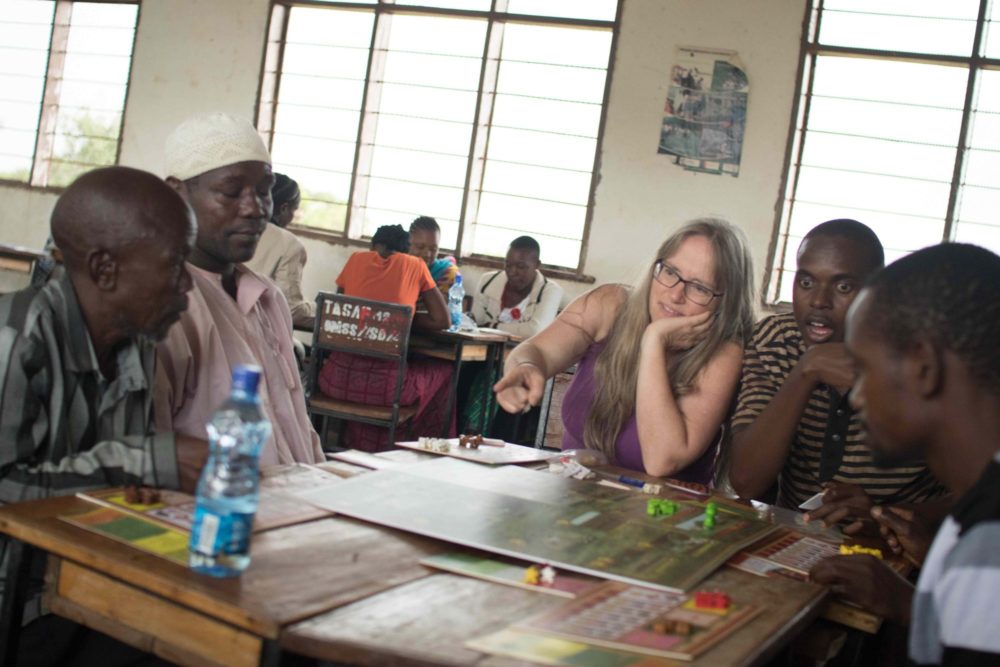
Bente Jessen Graae points as she talks to players about the Savanna Life board game. Photo: Thor Harald Ringsby/NTNU
Researchers call this area the Greater Serengeti-Mara Ecosystem, and not surprisingly, it contains a lot of people whose lives depend on the natural resources of the area — and whose behaviour is critical to the conservation of the ecosystem. Over the course of working on the project, the researchers realized that the best science and management plans wouldn’t work if the local people weren’t involved, she said.
“When you as an ecologist see all the human-wildlife conflicts working against conservation in areas like Tanzania and Kenya, you realize that it’s urgent to bring local communities on board in discussions about sustainable development for both people and nature,” Graae said. “We wanted to hear people’s opinions and what kind of future they wanted.”
- You might also like: Serengeti Road divides biologists
A conversation starter
Graae realized she needed to reach out to villagers in a way that would give them a chance to say what they really thought.
“If you just use questionnaires, people may answer what they think researchers want to hear,” she said. “But when you play a game with people, we think that people become more open to discussing things.”
Graae’s colleague, Martin Reinhardt Nielsen, an associate professor from the University of Copenhagen’s Department of Food and Resource Economics, also pointed out that people in areas where many researchers have worked before may be fed up with “being asked too many questions in too many surveys where they rarely see the results or receive any kind of feedback on what that could be used for or how it can help improve their circumstances.”
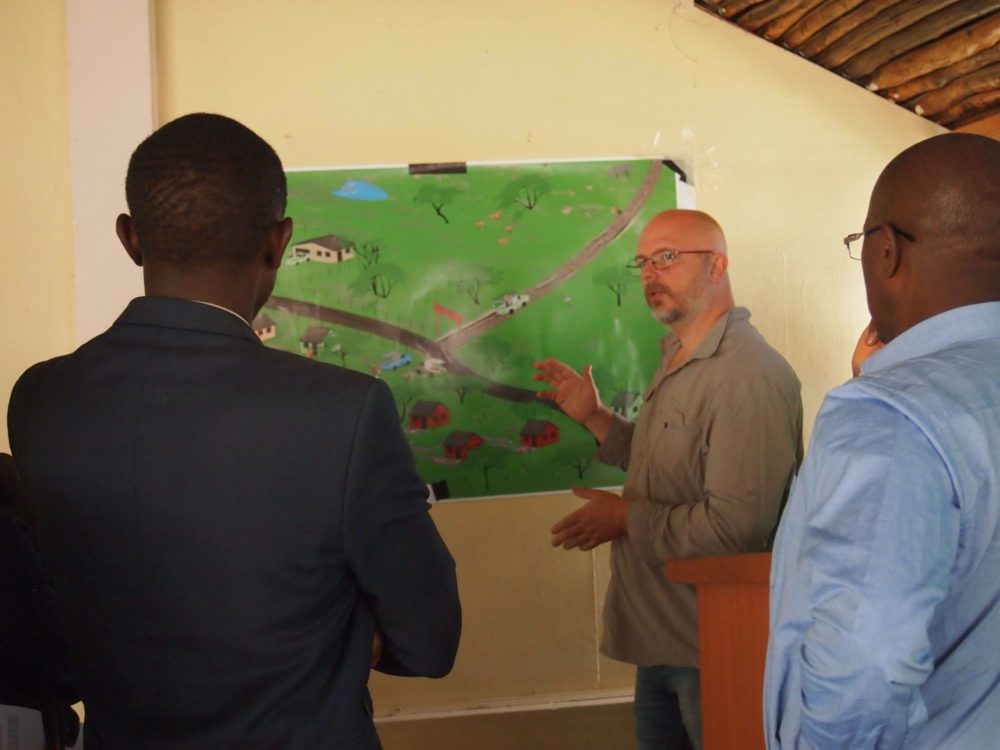
Martin Reinhardt Nielsen from the University of Copenhagen talks to stakeholders about future scenarios. Photo: Kjirsten Coleman/NTNU
“A game offers an alternative way for researchers to learn about local peoples preferences, but also for local people to gain insights into their own circumstances,” he said.
A game also could play yet another role, Graae realized — it could be used by students in NTNU’s Natural Resources Management programme as an interactive teaching tool for classes on sustainable land use planning, governance and behaviour.
Those two observations led to the development of “Savanna Life”.
“It’s fun, but it’s also serious,” Graae said. “And it opens up for conversation between people.”
From idea to board game
The idea of using games to explore issues around has a longer history than you might think. As early as 1968, educators were exploring the idea of using games to simulate different scenarios. Educators also realized that games where players take turns give all students, particularly those who might not participate in a classroom discussion, a chance to voice their opinions.
“If you just use questionnaires, people may answer what they think researchers want to hear. But when you play a game with people, we find that people become more open to discussing things.
For Graae and her colleagues, however, a game also meant that they could allow people from the area to see how different choices might affect the future of their villages and the lands around them.
It had to be realistic — and fun.
So Graae and her team hired a board game developer and established the ground rules. The game allows four people to play as four individual families in a village.
The aim was that all the families in the village had to be happy, as measured by a “happiness score”. That meant players had to collaborate to win.
The game also included “event cards” that reflected real things that might happen in a village, such as an elephant attack or a drought leading to loss of crops or livestock. There’s also a protected national park where players can poach wildlife if they choose. But if they make that choice, there are risk cards that determine what happens to the poacher.
“Sometimes nothing happens, and they get away with it,” Graae said. “And sometimes something really bad happens.” Both of these outcomes are realistic, she said.
Twelve villages, two game ranger groups and two district staff groups
Once they had refined the game, the researchers took it on a road trip to twelve villages in both Kenya and Tanzania. They recruited 12 people, half male and half female, from each village. Each participant was paid about NOK 40, equal to about two day’s pay. Local leaders helped recruit players.
The researchers set up two groups from each village to play the game, one male and one female group. The remaining four people were asked to discuss a series of four posters that depicted different future scenarios.
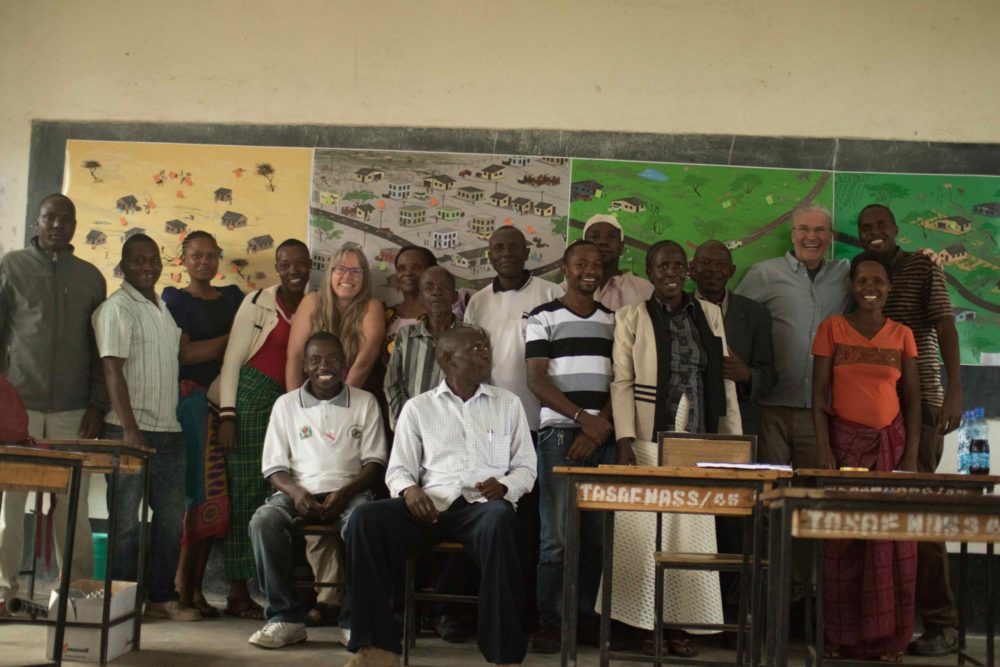
Participants stand in front of four posters showing possible future scenarios. The posters were used to encourage participants to discuss what they wanted for their own futures. Photo: Thor Harald Ringsby/NTNU
The researchers then watched and systematically recorded every move made by each player in the game. They also recorded the outcome after each round in terms of points (happiness), money earned, surviving livestock, villager tokens and how that matched up with the amount of food produced.
Women better than men
The University of Copenhagen’s Nielsen has the task of analysing all the information he and the other researchers collected.
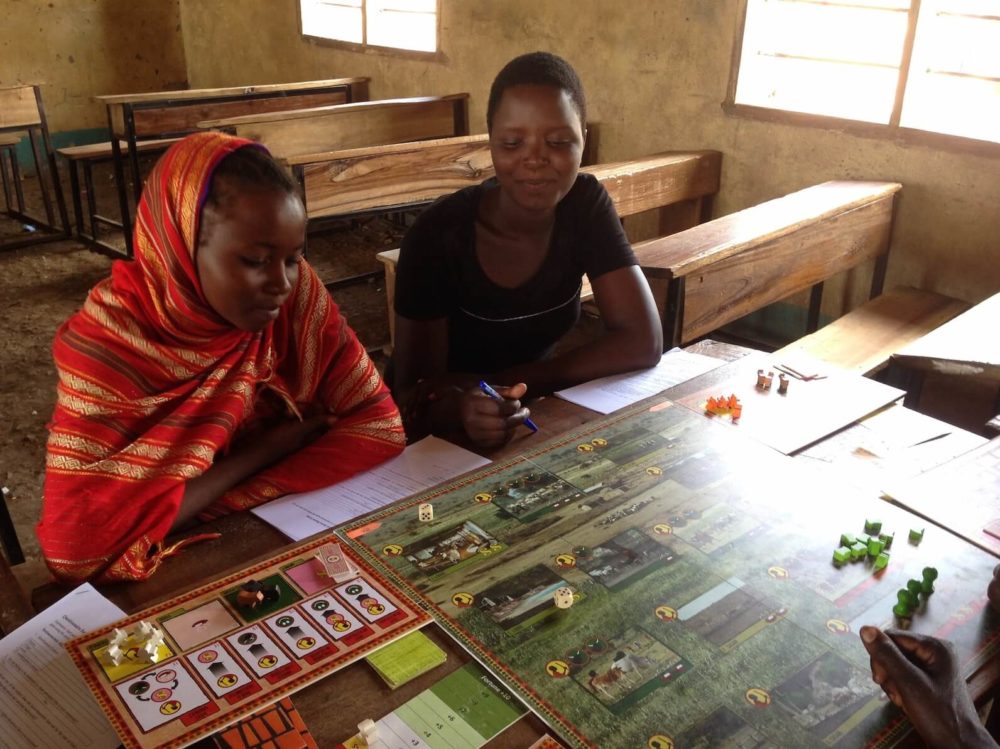
Women almost always outperformed men when it came to achieving the goals of the board game, which is to cooperate so everyone comes out better in the future. Photo: Bente Jessen Graae/NTNU
Although he is not done with the analyses yet, one of Nielsen’s preliminary findings is that women almost always outperformed the men.
“This suggests that women may be the better agents of change striving for sustainable natural resource management in the Greater Serengeti-Mara Ecosystem,” he said.
Jeremia Zachayo, who was a community facilitator for the project and helped villagers understand the game, also saw that women tended to be better at the game than men.
” I noted that women understand family management better than men, because they always were the winners of the game,” he said.
Another surprise was that the higher-level district staff played worse than villagers, Nielsen said.
“They were less cooperative, more risk-prone, poorer at wildlife management, played in a fashion that favoured population growth, and as a result lost more happiness (as the measure of playing successfully),” he said while cautioning that researchers only had data from two games played by district staff. That means that these findings are inconclusive and only suggest a possible trend.
A way to test alternatives
Overall, Nielsen said, he thinks the game has helped people get a better perspective of the consequences of their livelihood strategy choices for themselves and others.
AfricanBioServices
AfricanBioServices was an EU-funded research project coordinated by NTNU that investigated ecosystem services in the Greater Serengeti-Mara Ecosystem in eastern Africa.
The main aim of the research project was to understand how the ongoing climate change, human population growth and land use change affect biodiversity and human well-being, and use this information to derive novel solutions for a future sustainable development.
The project, with more than 100 researchers from Norway, the Netherlands, Scotland, Denmark, Germany, Tanzania and Kenya, was funded with EUR 9.89 million grant from Horizon 2020.
The four-year project ended in August 2019.
Read more about the project here: africanbioservices.eu
“This game directly enabled players to identify problems created by their current livelihood strategies, safely test various alternatives to what they currently do and discuss and agree on possible solutions to relevant environmental and development problems,” he said. “It also enabled different actor types – community members, protected area managers and district staff — to see the constraints on other’s livelihoods and get a better idea about why other actor groups act as they do.”
But an open question in using games in general, and also for Savanna Life, is whether the game can actually lead to a lasting change in behaviour.
“We were only able to collect information about the insights players gained and their statements about the extent to which these insights had made them consider making real-life changes in livelihood strategies,” he said. “But the overwhelming majority of players stated that they had gained important insights from playing the game that they would try to use or implement in their daily life to improve their life outcomes and protect the environment”.
Don’t want outside help
The four villagers who didn’t play the game talked to researchers about four posters that depicted possible futures.
For example, one of the posters, “Green Haven”, portrayed a future based on ecotourism, which is touted by many in the Western world as a solution to helping lesser developed countries earn hard currency while supporting their traditional lifestyles.
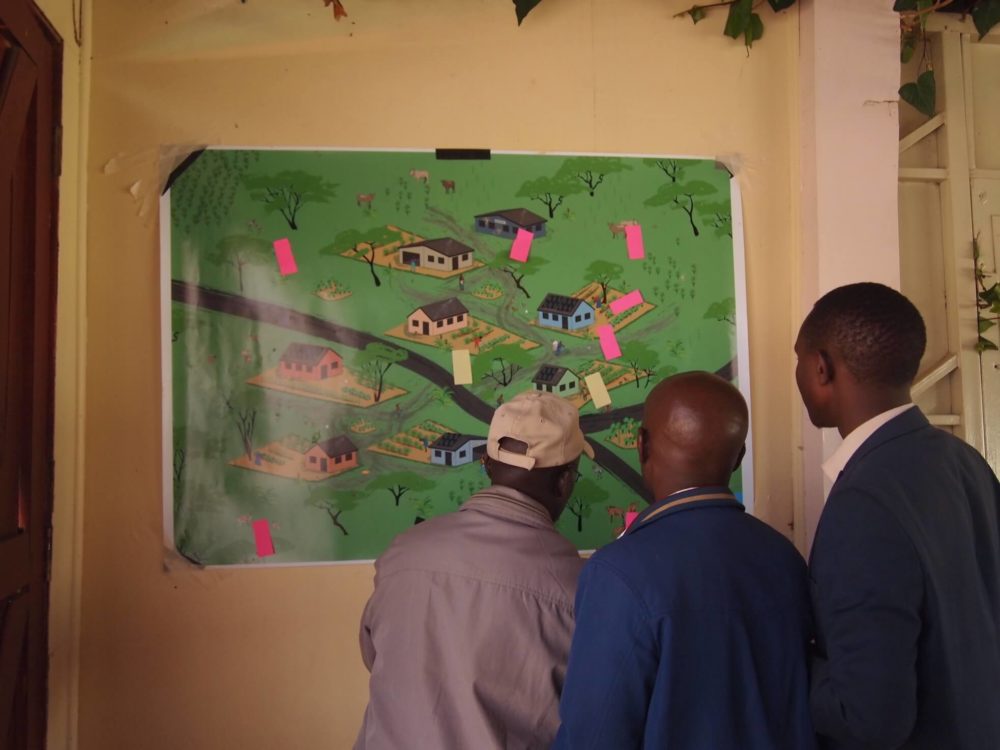
Villagers who didn’t play the game were asked to evaluate four future scenarios. They used sticky tabs to indicate which elements in the scenarios they liked best. Photo: Kjirsten Coleman/NTNU
But the researchers were surprised to find that most people wanted local sustainable development and not more Western intervention.
“Many didn’t want to be dependent on ecotourism and the West. They would rather have control over their natural resources than depend on our money,” Graae said. Most people though also wanted better infrastructure, such as roads, and electricity.
And they all wanted more education.
Popular with students, too
A second goal for the game was to develop an alternative teaching tool for students in Norway. The Departments of Biology’s and Geography’s master’s degree in Natural Resource Management now has about 32 students, with roughly half from outside of Norway.
Nazia Tabassum is one such student, originally from Dhaka, Bangladesh. For her master’s study at NTNU, she is working on a project looking at what the melting of glaciers will do to the hydrology of Norway and Central Asia.

A second reason for creating “Savanna Life” was to use it with Natural Resources Management students here in Norway. Photo: Thor Harald Ringsby/NTNU
She also had a chance to play the game.
“I was really fascinated by the game,” she said. “The game presented the concept of a complex savanna community and its reliance on nature in a very comprehensive and lively manner.”
She also could see a use for the game in natural resource management work.
“In the real world, stakeholders’ influence and control over management policies are crucial. Not all stakeholders have the same level of understanding of the entire system where wildlife, humans and their cultural values co-exist,” she said. “Therefore, the game can be very useful in educating stakeholders, particularly those who are directly or indirectly involved in wildlife protection and management works. The local people may also have a better understanding of the wise use of resources for a sustainable livelihood.”
Pedagogical underpinnings and copyrights
The AfricanBioServices project ended in August this year, but Graae and her colleagues have been awarded additional funds to keep developing the game so that it can be used as a teaching tool in Norway.
“What we realized was that you can develop a game, you can play it, but it needs to be embedded into good pedagogical practices,” she said. Some of the funding will be used to do exactly that, as well as to develop different downloadable packages that teachers can use in the classroom.
But what about the average person who might want to see what “Savanna Life” is like?
Alas, you won’t be able to wrap the game up to put it under your Christmas tree, Graae said — at least not this year.
The game will have to be copyrighted, and then the researchers have to find someone to sell and distribute the game, she said.
“We’re working on it,” she said.
